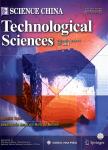Efficiency analysis and optimization of wireless power transfer system for freely moving biomedical implants
Efficiency analysis and optimization of wireless power transfer system for freely moving biomedical implants作者机构:State Key Laboratory of Robotics Shenyang Institute of Automation Chinese Academy of Sciences Shenyang 110016 China University of Chinese Academy of Sciences Beijing 100049 China
出 版 物:《Science China(Technological Sciences)》 (中国科学(技术科学英文版))
年 卷 期:2017年第60卷第1期
页 面:91-101页
核心收录:
学科分类:0831[工学-生物医学工程(可授工学、理学、医学学位)] 1004[医学-公共卫生与预防医学(可授医学、理学学位)] 08[工学] 0836[工学-生物工程] 10[医学]
基 金:supported by the National Natural Science Foundation of China(Grant No.61473281) the National Sciences and Technology Support Project(Grant No.2015BAI01B13) State Key Laboratory of Robotics Self-plan Project(Grant No.2016-Z06)
主 题:wireless power transfer system capsule endoscope freely moving biomedical implants receiving coil coil optimization efficiency
摘 要:In the wireless power transfer system for freely moving biomedical implants,the receiving unit was generally inefficient for the reason that its design parameters including the receiving coil s dimension and receiving circuits topology were always determined by *** order to build the relationship between these parameters and the total transfer efficiency,this paper developed a novel efficiency model based on the impedance model of the coil and the circuit model of the receiving *** to the design constraints,the optimal design parameters in the worst case were *** results indicate that the combination of the two-layered receiving coil and half-bridge rectifier has more advantages in size,efficiency and safety,which is preferred in the receiving ***,when the load resistance increases,the optimal turn number of the receiving coil basically keeps constant and the corresponding transmitting current and total efficiency *** 100 Ω load,the transmitting current and total efficiency in the worst case were measured to be 5.30 A and 1.45% respectively,which are much better than the published *** general,our work provides an efficient method to determine the design parameters of the wireless power transfer system for freely moving biomedical implants.



